Social Scene
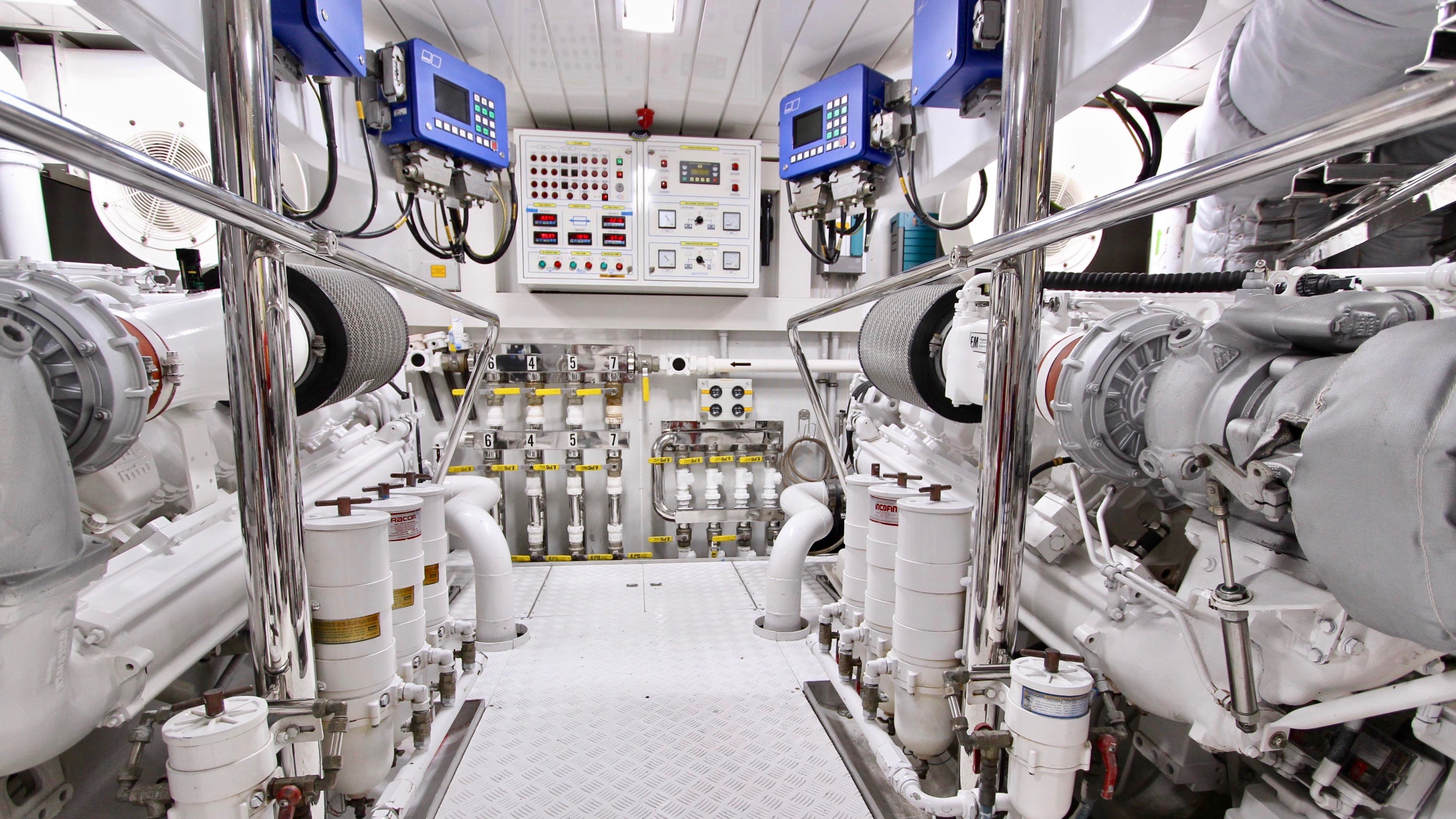
Boating Tip: Daily Engine Checks
Follow this quick daily checklist to increase your safety on the water.
If your pleasure boat is relatively new and the engine(s) have low hours it’s unlikely that you will have many problems when you’re out on the water provided that you have her serviced regularly by professionals.
Before you say, “I never go down into the engine room – it’s for the mechanics.”
What if you did actually have a problem while you were out on the water? Would you know the basic things to check quickly? You can’t just pull into a roadside cafe to wait for the auto club “road service” truck. Older boats with more hours of use need even more attention.
If you’re the skipper, ultimately you’re responsible for the safety of your friends and family aboard your boat. Knowing what to look for and conducting those regular engine checks will reduce the probability of something going wrong unexpectedly and placing everyone at risk.
If you are spending a few days out on your boat, the Royal Yachting Association’s training syllabus talks about a great acronym to use as a memory jogger – it’s the word “WOBBLE” with a double B.
Run through this quick set of visual checks at least once a day to help you minimise any mishaps or downtime.
Doing this will also mean that you have the best chance of spotting any issues before they become major.
W.O.B.B.L.E. stands for:
“W” = Water filters/sea strainers – look for obstructions
“O” = Oil levels in your engine(s) – check that it’s in the proper range
“B” = Belt(s) – check for correct tension and any damage
“B” = Bilge condition – look for water or oil that shouldn’t be there
“L” = Levels of your engine coolant, and finally
“E” = Engine exhaust – check for good water flow from the exhausts
Water Filter
Water filters, often called Sea Strainers, protect your engines and other on-board machinery such as a generator or air conditioning from dirt and other objects that may be sucked into the raw sea water intake through the openings in your hull. They need to be checked regularly.
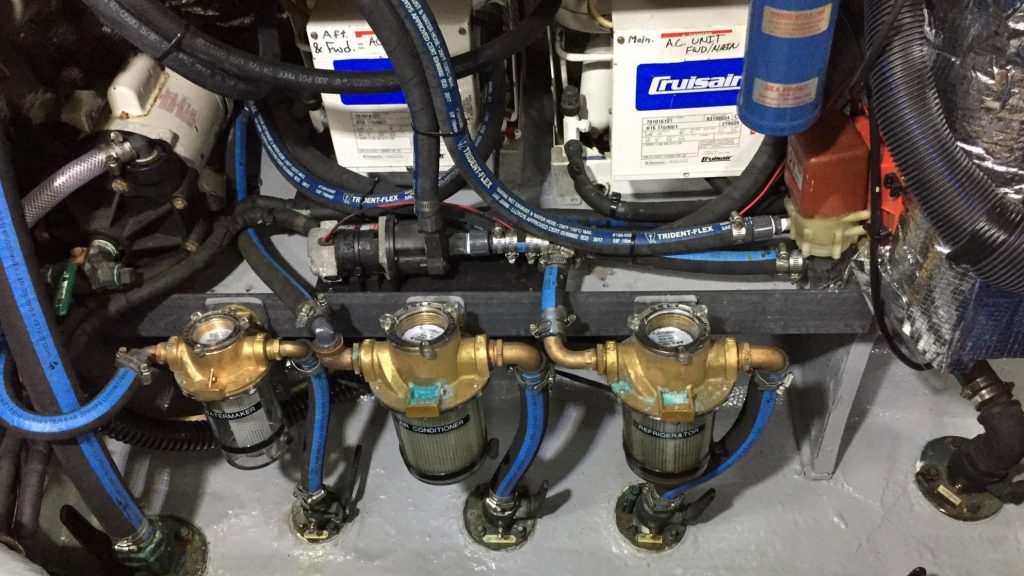
Strainers and Seacocks for ancillary machinery.
To check a filter, first close the seacock (like a water tap) to prevent sea water coming in, then open up the filter. Most have a strainer basket that can be removed and cleaned. Take out any muck collected inside and give them a good backwash with clean water before you re-secure the filter’s cover.
These covers/caps often have a large rubber seal that you should also check for grit and splits or cracks showing obvious deformation and wear. Ensure that it’s firmly seated and secured, then turn the seacock back on (Very Important). Watch for leaks.
Oil Levels
Know where the dipsticks on your engines are so that you can check the levels according to the procedure recommended by your manufacturer. For instance some require the engine oil to be at operating temperature before dipping.
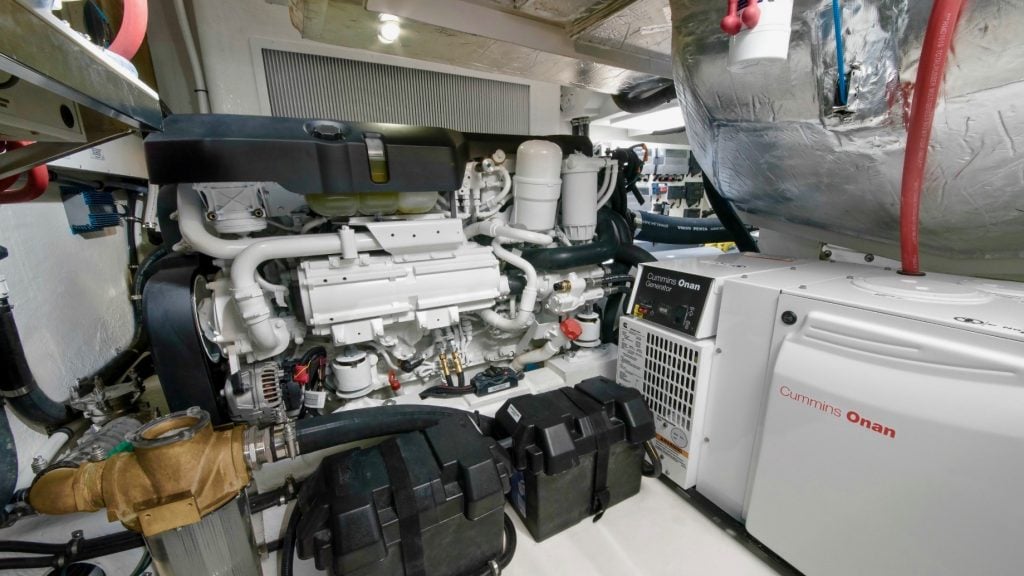
Dipstick and oil filler stand out with red caps on the engine of this Riviera 4800. Also Sea Strainer shown bottom left of photo.
It’s recommended that you carry a spare container of the oils you need for your engines, transmissions, hydraulic systems etc so that you can ensure that they are always operating at their best.
Belts
The engine drive belts keep important parts operating such as pumps and alternators. Any lack of tension will reduce the efficiency of these items and therefore cause overall problems with the engine and ancillary systems. For instance, if the charging output from your alternator is reduced, the batteries may not be charged properly. If the freshwater coolant pump doesn’t operate at full capacity, the engine may overheat.
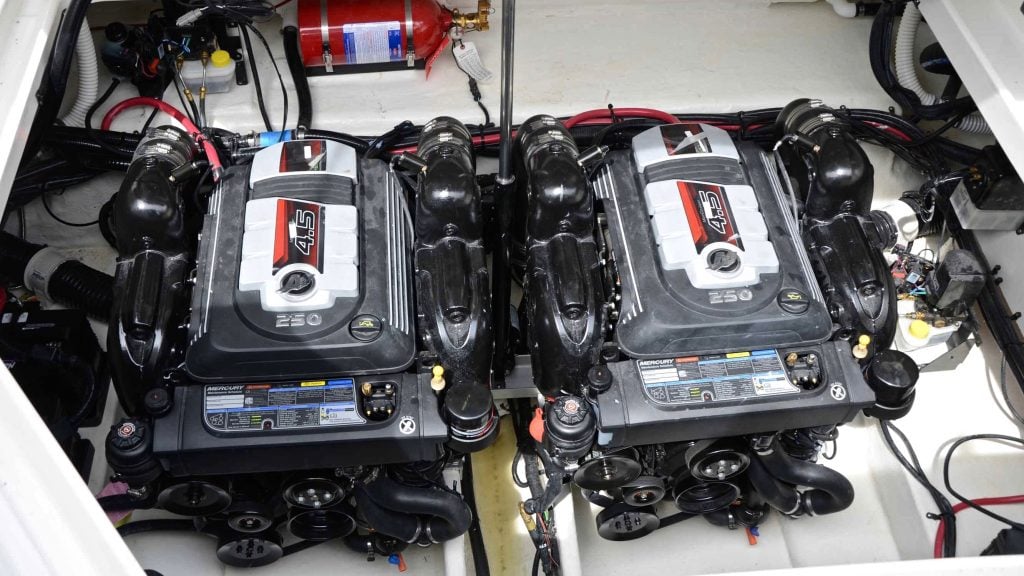
The belts are accessible on the front of these MerCruiser engines.
Check your belts for damage and correct tension to avoid these problems. Belts that are damaged will often shed rubber particles about the engine room. Belts that are too loose often “squeal” under load.
Bilges
Check your bilges for signs of leaks from your engines and other equipment. The bilge is the lowest part of the keel of your boat’s hull and is where fluid will collect. Many boats will have some water in the bilge so look for signs of “oil slick” on the surface that may indicate oil, hydraulic fluid or fuel is leaking from somewhere.
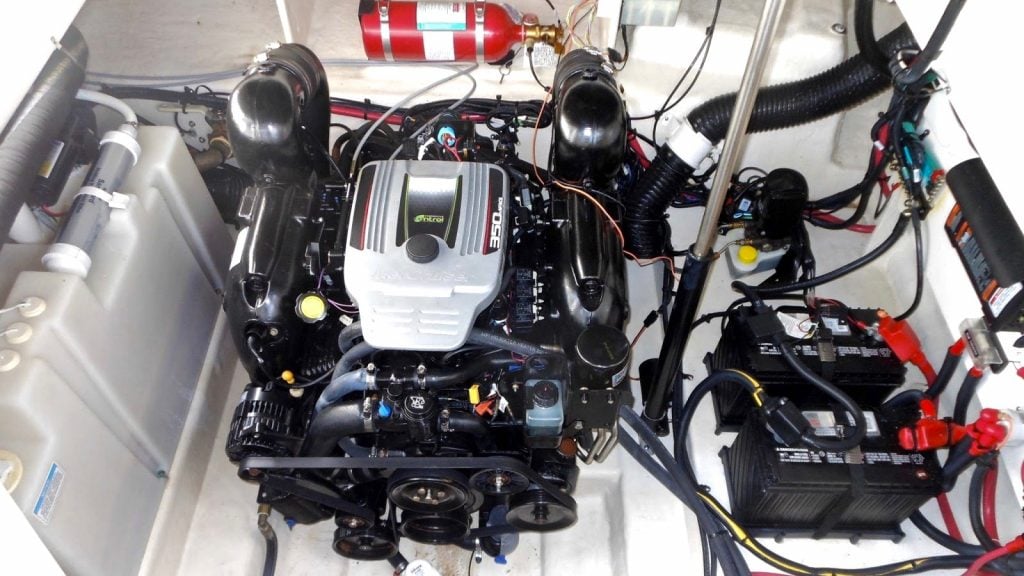
A clean and tidy engine room allows you to spot problems quickly.
Keep your engine room and bilge spotlessly clean! This will allow you to spot problems like this before they become either very expensive or hazardous.
Levels
Marine engines can be fresh-water or sea water cooled. If your boat has freshwater cooled engines, then there will be a header tank to check just like your car radiator has. Ensure that the level in this header tank is between the minimum and maximum lines and keep spare coolant on board to to top it up when necessary. Not that this is special coolant fluid with corrosion inhibitor not just water, although in an emergency, water can be used.
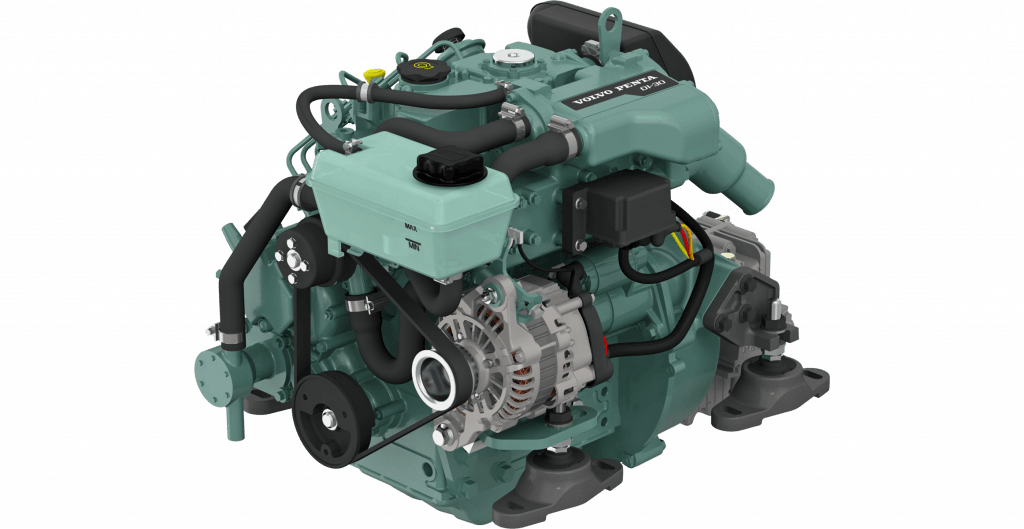
The Coolant Header Tank can be seen at the top of this Volvo engine.
Other fluid levels to check include the engine hydraulics, and the trim tabs.
Engine / Exhaust
When you’re ready to start your engines, always check for obvious lines (ropes) and fishing lines that may be dangling near your propellers and that the area is clear of swimmers. Upon starting, inspect the exhaust outlets for at least 30 seconds to ensure that there is a proper flow of water coming out.
If this water is substantially oily, rust coloured or smells of fuel and continues to be, then this is an indicator of a major problem looming. Get it checked out by your service professional quick smart.
Contact the Royal Yachting Association or their authorised training establishments for further clarification about the WOBBLE acronym.
If you would like some assistance with your engine servicing, don’t hesitate to give us a call on +61 (0)2 8880 4088 or email at marine@standengroup.com.au
Author: Steve Williams | Standen Marine
Video: Standen Group Marketing
Photos: Photos remain the property of their respective owners. Please contact us for acknowledgment.